Federal and State Listed Species of Texas:
Zapata bladderpod
Global Location
Zapata bladderpod occurs in South Texas in Starr and Zapata counties as well as across the border in the state of Tamaulipas in Mexico.
null
Credit:
Description
A trailing perennial, Zapata bladderpod's zig-zagging, silvery-green stem grows 40-80 cm tall. All green parts of the plant are covered with a layer of hair, except for the fruit. The microscopic hairs split into four to six radiating side branches, each of which often divides further into two more branches. The elongated oval rosette leaves are 4-12 cm long and have irregularly wavy, shallowly toothed, or smooth edges. Leaves of the stem are similarly shaped but smaller (3-4 cm long) and narrower with entire or irregularly wavy edges or with a few scattered teeth along the margin. Flower clusters are spread along a ≤30 cm long stem, but arise on only one side of the stem. Flowers and subsequently fruit are attached to the main stem by a stalk, which curves back toward the stem. The four broadly teardrop-shaped petals are yellow. Fruits are round to oval and 4.5-6.5 mm long. When mature, the fruit splits open exposing eight flat seeds.
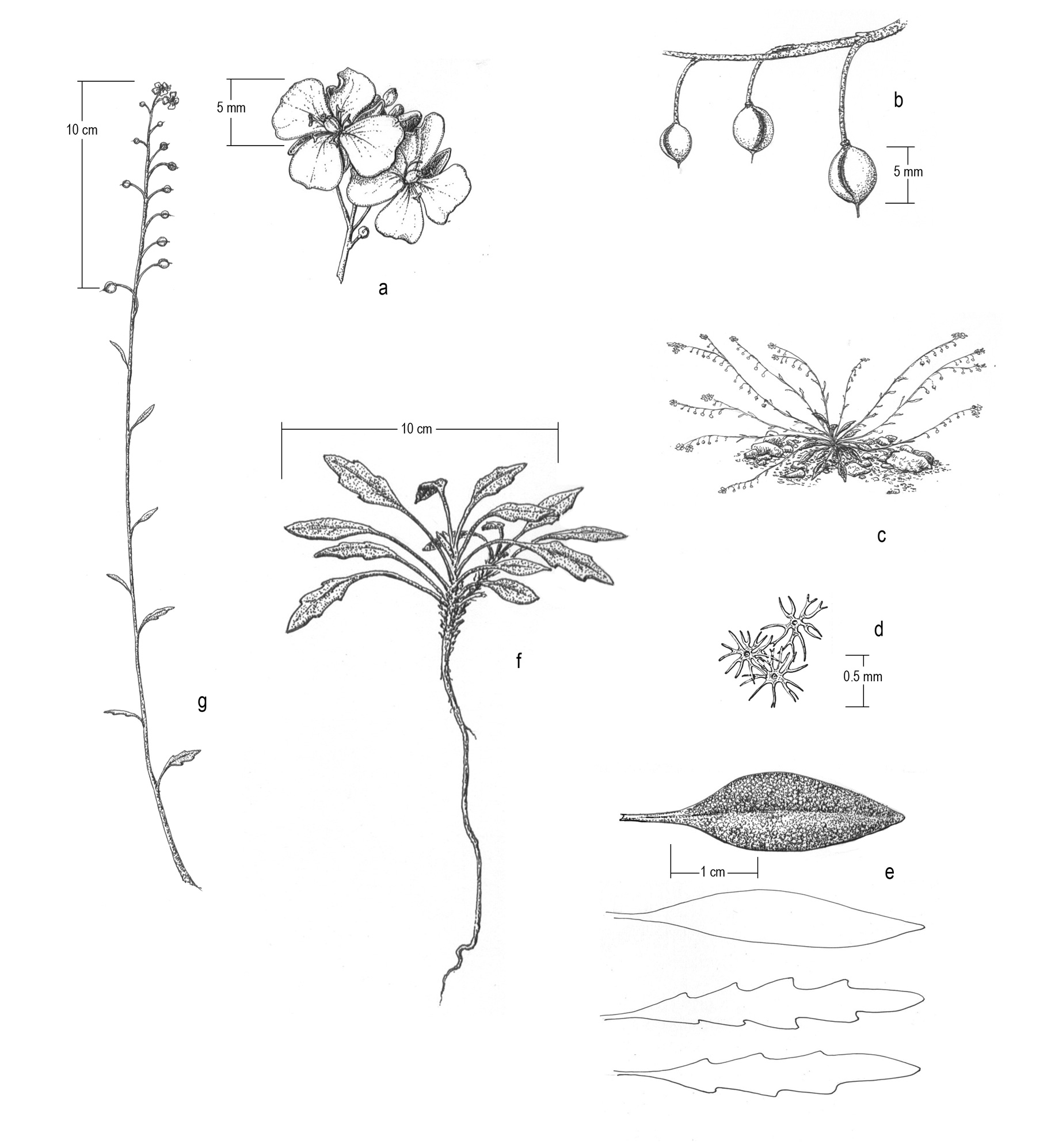
b) Flowers and fruit are attached to the main stem by a stalk, which curves back toward the stem. d) The plant is covered with microscopic hairs, which split into four to six radiating side branches, each of which often divides further into two more branches. e, f) Rosette leaves are elongated oval and have irregularly wavy, shallowly toothed, or smooth edges. g) Stem leaves are smaller and narrower than rosette leaves with entire or irregularly wavy edges or with a few scattered teeth along the margin.
Credit: Collene Sweeney
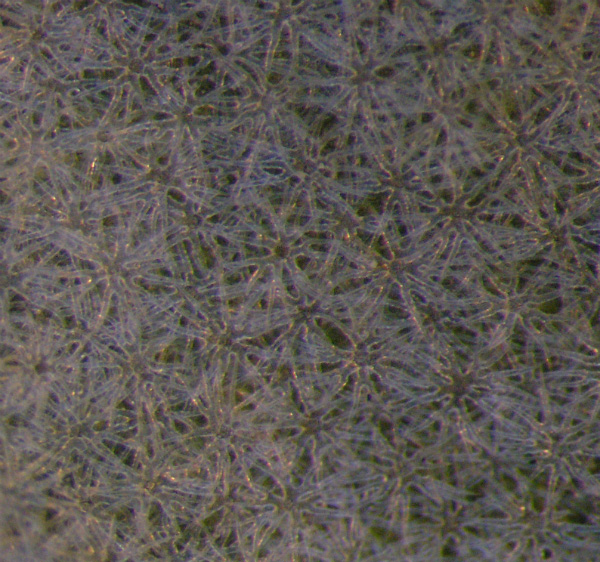
Zapata bladderpod is covered with a layer of microscopic hairs, which split into four to six radiating side branches, each of which often divides further into two more branches.
Credit: Paul Turner - Druid Environmental
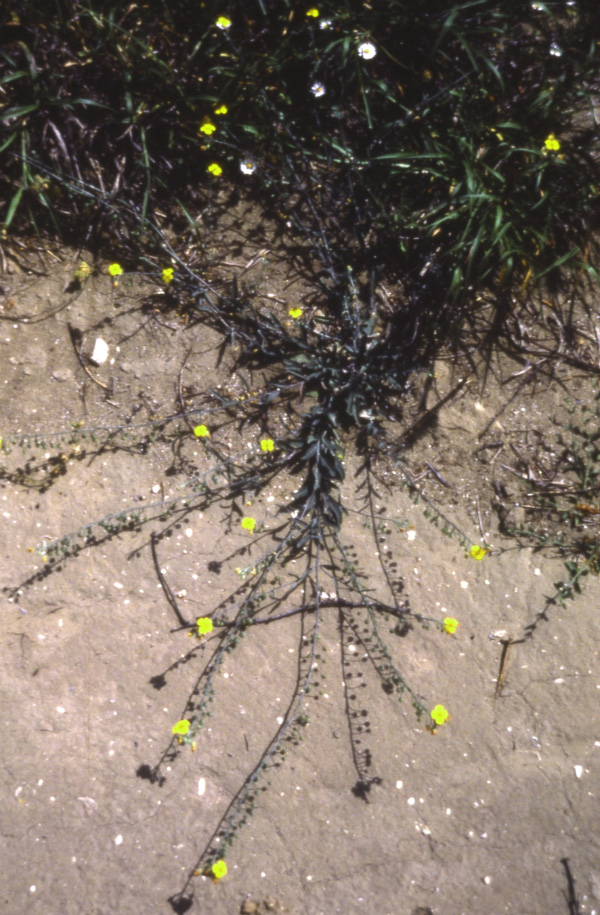
Zapata bladderpod has yellow flowers that arise on only one side of the trailing stem.
Credit: Jackie Poole - Texas Parks & Wildlife Dept.
Similar Species
Although several bladderpods occur in the same area as Zapata bladderpod, silver bladderpod (Physaria argyraea) is the most similar in appearance. Silver bladderpod has an S-shaped flower/fruit stalk that holds the flower (and then fruit) away from the main stem. Silver bladderpod also has microscopic hairs that split into radiating side branches, but unlike Zapata bladderpod, these branches do not divide any further. Additional characteristics that enable identification from other bladderpods are Zapata bladderpod’s elongate-oval leaves without lobes at the leaf base, hairless fruits, perennial habit, and elongated flowering stems with widely spaced flowers and fruits.
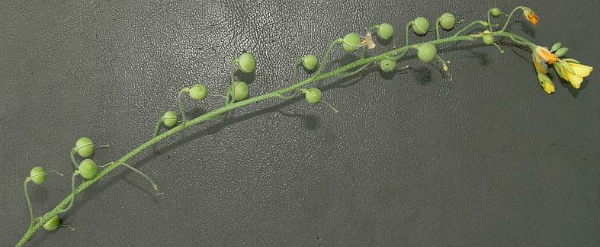
Silver bladderpod has an S-shaped flower/fruit stalk that holds the flower (and then fruit) away from the main stem.
Credit: Bill Carr
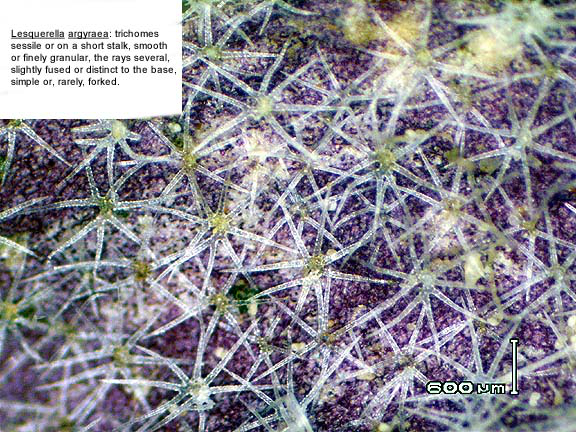
Silver bladderpod has microscopic hairs that split only once into radiating side branches.
Credit: Amanda Cemper - TX A&M Vascular Plant Image Gallery
null
Credit:
null
Credit:
null
Credit:
null
Credit:
Floral Characters
nullLeaf Characters
nullnull
Credit:
null
Credit:
null
Credit:
Habitat
Zapata bladderpod occurs in open thorn shrublands over shallow, gravelly or sandy soils and sandstone outcrops.
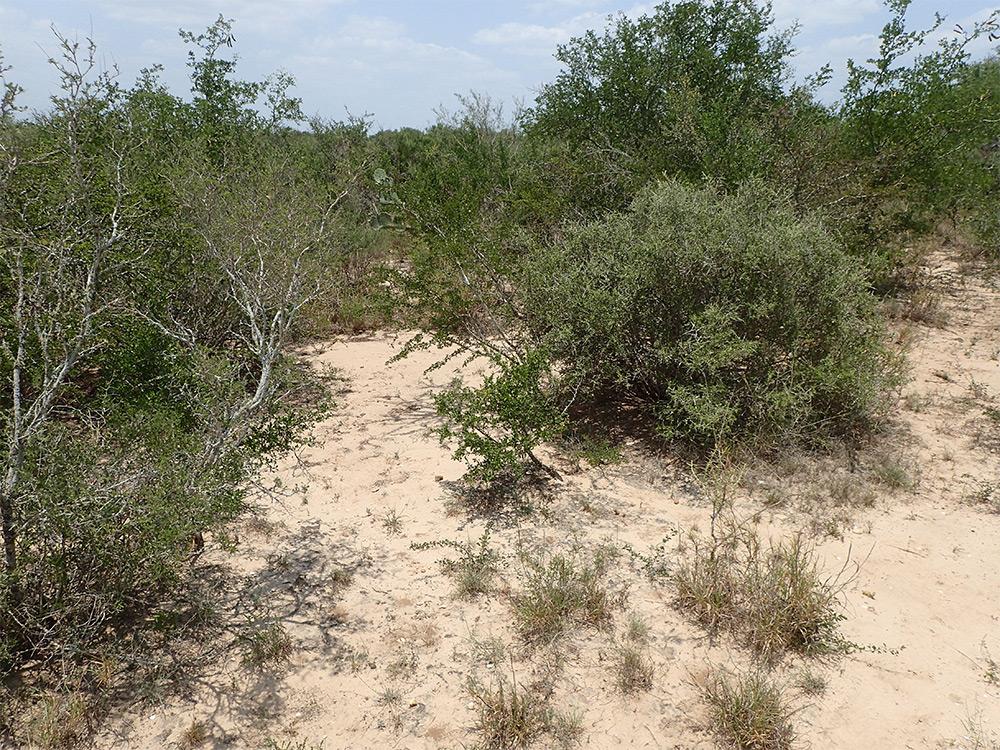
Habitat of Zapata bladderpod.
Credit: Anna Strong - Texas Parks & Wildlife Dept.
Life Cycle Events
Flowering occurs from February to April and occasionally in the early fall after rain.
Survey Season
Zapata bladderpod is most easily found soon after rains and/or in the spring while in flower. It is also possible to identify the plant when in fruit. Extreme drought may result in Zapata bladderpods remaining dormant in a below ground state.
null
Additional Information
- Rare Plants of Texas
- U.S. Fish and Wildlife Service
- NatureServe
- Flora of North America
- Center for Plant Conservation
- Carr, W.R. 1995. Rare plant surveys on Lower Rio Grande Valley National Wildlife Refuge tracts, December 1993-July 1995. Austin: Texas Parks & Wildlife Department.
- Poole, J.M. and G.K. Janssen. 1997. Managing and monitoring rare and endangered plants on highway right-of-ways in Texas. Section 6 final report. Austin: Texas Parks & Wildlife Department.
- Pronatura Noreste, A.C. 2005. Status, distribution, and conservation of three species of rare plants in the Lower Rio Grande in Mexico. Section 6 final report. Austin: Texas Parks & Wildlife Department.
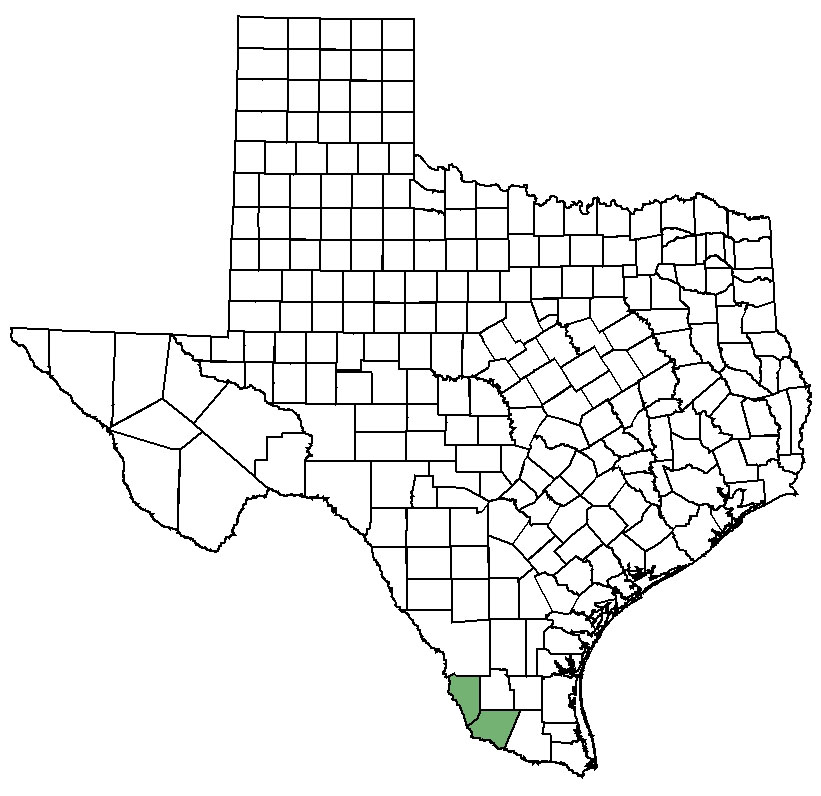
Comments
Numbers of individuals and percentages of mature and immature plants in Zapata bladderpod populations can be highly variable from year to year. Some of this variation could be due to irregular rainfall amounts before each bloom period. As with many plants in arid environments, Zapata bladderpods are dormant until sufficient rain and/or temperatures arise. After which the plants grow, flower, produce seed, and resume dormancy in a fairly short period of time.